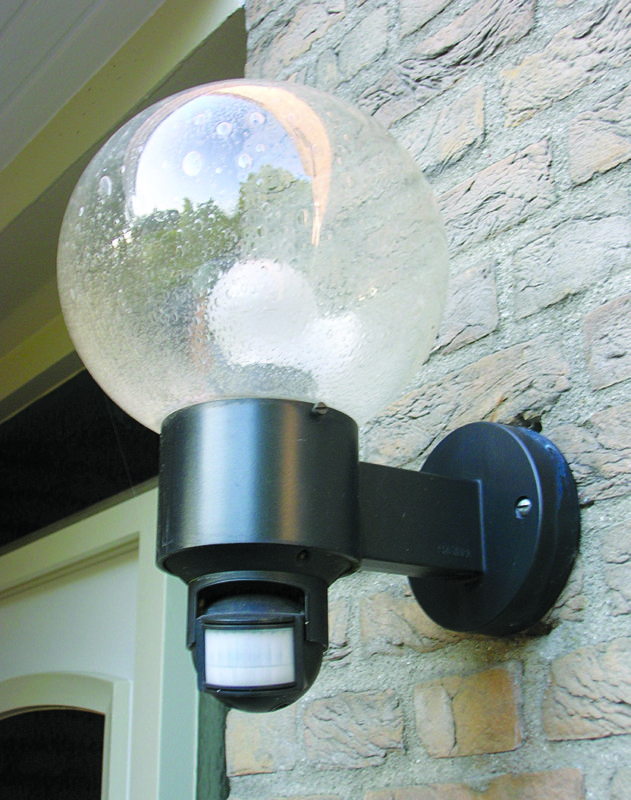It’s eight o’clock at night. Everyone has left for the day. Still, you see all the lights and electric appliances running in your office. Putting up signs like “last person to leave turns off the lights” is read and followed by only a handful. Keeping a staff just for turning off the appliances when not in use is also not a cost-effective solution. So how to get around it to reduce electricity wastage?
Energy-efficient lighting like light-emitting diodes (LEDs), intelligent technologies like smart control and automation, and more of the likes have been the talk of the town for a while. There is one more very competent candidate in this mission of energy savings that goes by the name of passive infrared (PIR) motion sensors to reduce electricity wastage.
Be it a small office or a large industrial plant, a substantial portion of the whole floor remains vacant throughout the day while the appliances keep running, wasting a great deal of energy. PIR sensors detect movements in an area based on the infrared heat signatures emitted by warm bodies. Depending on the infrared reading, appliances are switched on or off.
Slash your monthly electricity bill
Use of PIR motion sensors in your office space can cut your electricity bill by up to 30 per cent, depending on factors like the area covered, the frequency of electricity usage in the covered area, load devices that the sensor is connected to and so on. PIR sensors themselves draw less than one watt of power per hour in idle situation, so their own electricity consumption does not impact the bill at all.
PIR sensor manufacturers and dealers in the Indian market claim a cost saving of up to 30 per cent if PIR sensors are used properly for electric appliances in offices. For instance, lights or fans in meeting rooms, conference halls, washrooms or other areas keep running even when the rooms are unoccupied. These are areas where major savings can be achieved.
According to Delhi-based Highly Components Electronics, if a 40W tubelight used in a corridor runs for 12 hours a day, its operating time can be reduced to just three hours. Considering the average electricity cost of ₹ 4.5 per unit consumed, monthly cost of running one such tubelight can be cut down from ₹ 64 to ₹ 16, i.e., a monthly saving of ₹ 48 per tubelight.

For instance, Hyderabad-based Wells Fargo India Solutions has been able to cut energy usage in its unoccupied zones by 10 per cent and overall energy consumption by 30 per cent using Wipro Lighting’s sensors. The solution included occupancy detector installation and personalised lighting control among others.
A green premise and quick ROI
Cost cutting using PIR sensors implies a quick return on investment. Swati Deshpande, CEO of Shriyuj Electro Controls, says, “On an average, it will take up to one year to get a return on investment in PIR sensors for lighting. It however, depends on a few factors like the area of your office space, the sitting arrangement, the number of sensors required and so on.”
The technology also drives enterprises towards an environment-friendly foundation. Lower electricity wastage results in lower carbon gas emission, reducing a company’s carbon footprint significantly.
Swati shares an elaborate case study in this aspect. Belgium-based Bekaert, a steel-wire transformation and coatings manufacturer, was looking to cut down its electricity consumption and build a green office environment at its India branch. Shriyuj, a solutions provider formerly known as Varad Electro Systems, went ahead with a mix of motion/occupancy sensors, timer-based controls and a few more lighting automation solutions. The setup allowed electricity usage control based on holidays and work-hours.
Initially installed to control lighting, the application was upgraded to include AC controls as well. As a result, the company achieved savings of ₹ 25,000 in the first month’s electricity bill, which increased up to ₹ 47,000 in the fifth month. Bekaert reported up to 25 per cent electricity savings throughout the year, which cut down the costs by nearly ₹ 380,000 in one year. Additionally, reduced electricity consumption cut down carbon dioxide emission by 24 tonnes.
Intelligent usage only for the people
Motion sensors are used to switch on power only when a human is detected in the area covered. Technology has advanced enough to differentiate between humans, animals and other objects during detection. Moreover, controls can be customised to run lighting based on the availability of daylight. Organisations are using these sensors for highly accurate lighting and other appliances’ control.Ecoamica Technologies LLP shares a customer experience to explain. A Bengaluru-based technology multinational firm sought electricity consumption control solutions for areas like hosting server floors, corridors as well as aisles. The Ecosirius range of solutions by Ecoamica was installed throughout the intended premises with good results.
A total of 300 sensors deployed throughout the area cut electricity usage from 12 hours down to just 1.5 hours a day. At an average electricity cost of ₹ 6.75 per unit, the firm’s monthly electricity bill of ₹ 940,000 dramatically went down to ₹ 120,000—a total saving of more than ₹ 800,000 in one month. The total setup cost was around ₹ 200,000, implying ROI within one month of the implementation.
The final word
When coupled with the right energy-efficient lighting and smart technology, PIR sensors can be a real money-saver. Sensor placements, proper usage and frequency of use play a big role in the ROI. Electricity can account for up to 20 per cent of an organisation’s monthly expenses. So, controlling the consumption is a smart move to cut overhead costs.
Feel interested? Check out other cool stuff.







Sir pir sensor is able to detect that in the room animals are present or man or women or object